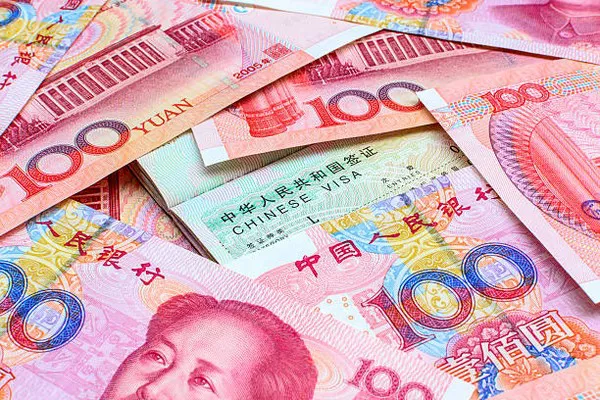The Chinese yuan, also known as the renminbi (RMB), has experienced a notable decline against major currencies in recent months. This downward trend has sparked concerns among investors and policymakers worldwide, prompting a closer examination of the underlying causes driving the currency’s devaluation.
Economic Factors
Several macroeconomic indicators play a significant role in influencing the value of the yuan. China’s trade balance, for instance, has a direct impact on its currency’s strength. In recent years, the country has faced trade tensions with major trading partners, particularly the United States, leading to disruptions in global supply chains and reduced demand for Chinese exports. This imbalance has put downward pressure on the yuan as the Chinese government seeks to maintain competitiveness through currency devaluation.
Moreover, fluctuations in China’s GDP growth and inflation rates can affect investor sentiment and, consequently, the value of the yuan. Slower-than-expected economic expansion and rising inflation could signal underlying weaknesses in the Chinese economy, prompting investors to divest from yuan-denominated assets.
Government Policies
China’s monetary and fiscal policies also play a crucial role in shaping the yuan’s trajectory. The People’s Bank of China (PBOC), the country’s central bank, implements measures to manage the exchange rate and stabilize the economy. In recent months, the PBOC has intervened in the foreign exchange market to prevent excessive depreciation of the yuan, signaling its commitment to maintaining exchange rate stability.
Additionally, China’s currency controls and capital flow management policies influence the yuan’s value. The government’s efforts to liberalize capital controls have been met with mixed success, with concerns over capital flight persisting among investors. Any changes in these policies can have significant implications for the yuan’s exchange rate.
Global Market Trends
Global events and trends also exert considerable influence on the yuan’s performance. Changes in US interest rates, for example, can affect investor demand for yuan-denominated assets. A rise in US interest rates typically strengthens the dollar and weakens emerging market currencies like the yuan as investors seek higher returns in US markets.
Furthermore, escalating trade tensions between the United States and China have contributed to market volatility and currency fluctuations. The imposition of tariffs and retaliatory measures has dampened investor confidence and raised uncertainty about the future of bilateral trade relations, leading to currency depreciation.
Investor Behavior
Foreign investment flows play a critical role in determining the strength of the yuan. In recent years, China has attracted significant foreign investment, driven by its growing economy and market potential. However, concerns over regulatory uncertainties, geopolitical risks, and trade tensions have prompted some investors to reconsider their exposure to Chinese assets, leading to capital outflows and downward pressure on the yuan.
Comparison with Other Currencies
To gain a broader perspective on the yuan’s performance, it is essential to compare its movement with other emerging market currencies. While the yuan has experienced depreciation against major currencies, its performance relative to its emerging market counterparts varies. Factors such as economic fundamentals, geopolitical developments, and investor sentiment contribute to these disparities.
Expert Opinions
Economists and financial analysts offer valuable insights into the future outlook of the yuan. Many experts believe that the recent decline in the yuan is a reflection of broader economic challenges facing China, including slowing growth, rising debt levels, and structural reforms. However, opinions diverge on the extent and duration of the currency’s depreciation, with some forecasting a gradual recovery as China implements stimulus measures and addresses structural imbalances.
Historical Context
A brief review of historical fluctuations in the yuan’s value provides valuable context for understanding its current trajectory. In the past, significant drops in the yuan’s value have been accompanied by adjustments in China’s economic policies and market reforms. For instance, the devaluation of the yuan in 2015 was driven by concerns over slowing growth and a desire to boost exports. While the initial impact was met with market volatility, the yuan eventually stabilized as the Chinese government implemented measures to support the currency.
See Also What is the CNY prediction?
In conclusion, the decline of the yuan is influenced by a complex interplay of economic, political, and market factors.While recent developments have raised concerns about the currency’s stability, China’s robust economic fundamentals and policy responses provide a foundation for cautious optimism. However, ongoing global uncertainties and domestic challenges underscore the need for continued vigilance and proactive measures to support the yuan’s resilience in the face of external pressures.


